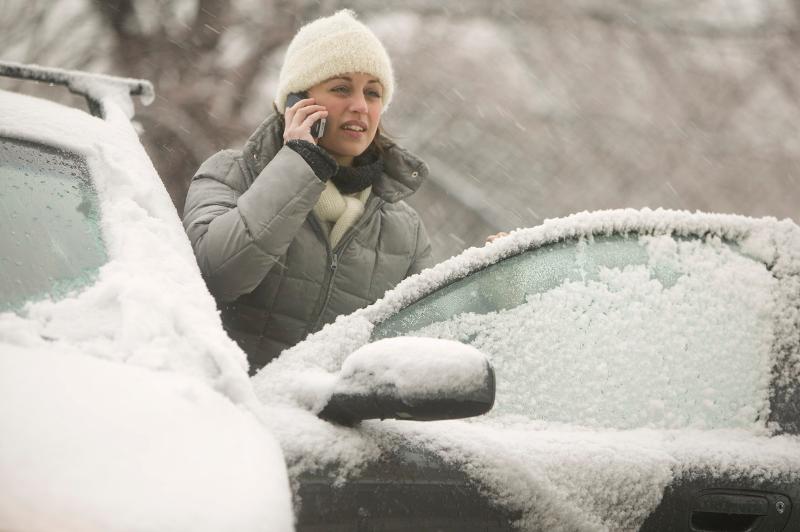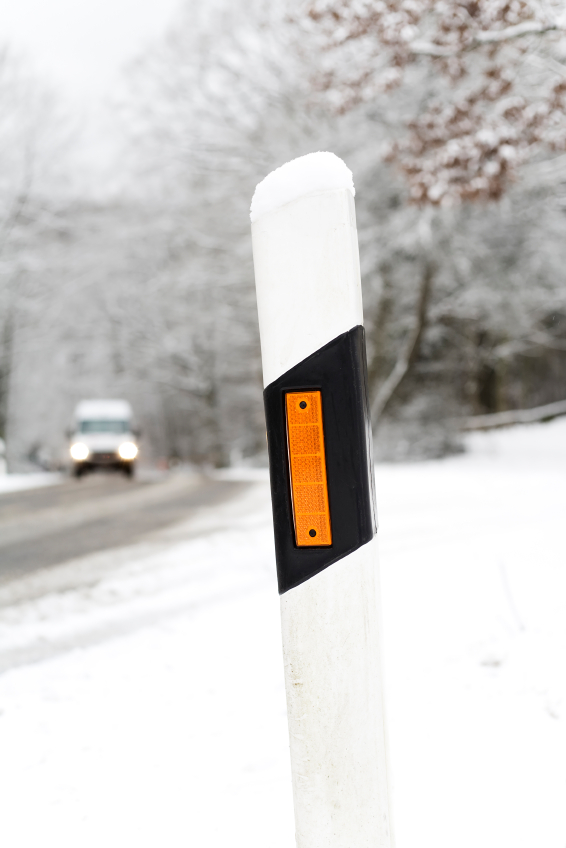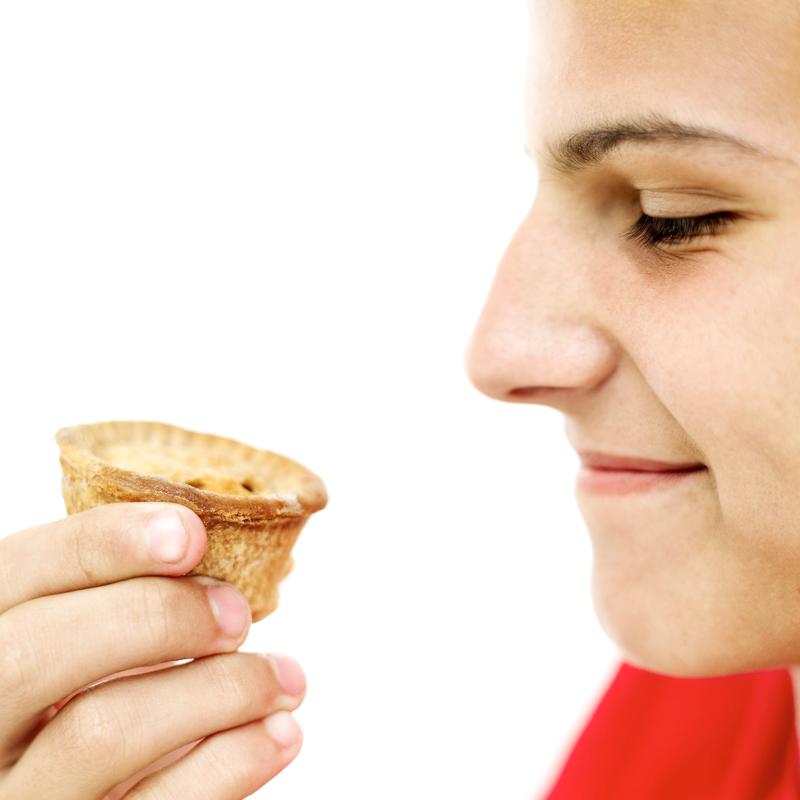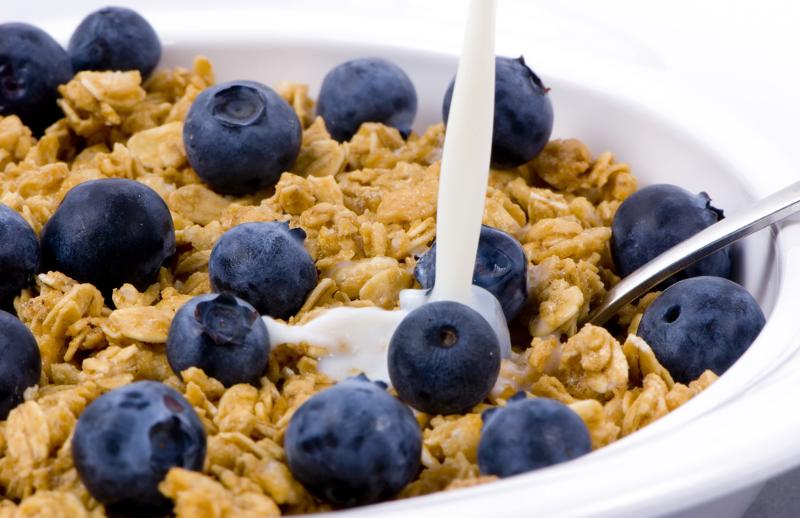|
|
|
|
|
|
|
|
Greetings!
'Tis the season--for holiday food, colds and flu, winter blues and other health traps. In this edition of Health e-News, we're exploring coping strategies for some common obstacles to your wellness efforts. With a little planning and motivation, you can enjoy a healthy December and beyond.
We encourage you to share this valuable information with your employees. Their version of this month's newsletter can be found at: http://goo.gl/WlT6T. From all of us at Affinity Occupational Health, best wishes for a festive and relaxing holiday season! Holly Tomlin
Lead Employer Health & Wellness Consultant
Affinity Occupational Health |
|
 Stop the Spread of Colds and Flu Stop the Spread of Colds and Flu
It's cold and flu season, which means all around us, people are coughing and sneezing and carrying germs. Help limit the spread of illness with these tips from the Centers for Disease Control and Prevention.
- Get a flu shot. It's the single most important tool against preventing influenza.
- Avoid touching your eyes, nose or mouth. Cover your nose or mouth with a tissue when you cough or sneeze.
- Wash your hands often with soap and water. If soap and water aren't available, use an alcohol-based hand sanitizer. Cleanse your hands with one or the other, anytime you have touched your eyes, nose or mouth.
- Try to avoid close contact with sick people. Anyone with a fever should stay home from work, school, shopping or socializing until the fever is gone for 24 hours without help from fever-reducing medicine.
- Routinely clean frequently touched objects or surfaces, such as doorknobs, keyboards and phones.
- Make sure your workplace has an adequate supply of tissues, soap, paper towels, alcohol-based hand rubs, and disposable wipes.
- If you feel sick at work or school, go home as soon as possible.
|
 Shedding Light on SAD Shedding Light on SAD
Been feeling blue since winter set in? Seasonal affective disorder (SAD) is a type of depression caused by lack of sunlight. In areas of the country like Wisconsin where winter days are cold and short and leave little opportunity to enjoy the outdoors, SAD is not uncommon. It affects up to 20 percent of the population, mostly women in their 20s and 30s. Learn to recognize the signs of SAD in your workplace so you can prevent productivity from dropping with the temps.
SAD Facts
"Lack of sunlight interrupts the sleep-wake cycle - called circadian rhythms - and it can also drain the body's levels of serotonin, a brain chemical affecting mood," says Daniel Neunaber, PhD, psychologist with Affinity Health System. SAD is often treated with light therapy. "For half an hour a day, sufferers can sit in front of a special light box that mimics the sun and signals the brain to produce more serotonin, lifting mood and relieving symptoms of SAD," says Dr. Neunaber.
SAD Symptoms
SAD usually occurs between November and February, winter's darkest months. Symptoms start to ease when spring weather returns in March or April. Common complaints include:
- grumpy, anxious or irritable mood
- loss of interest in usual activities
- daytime drowsiness
- changes in appetite, weight or sleep habits
As with other forms of depression, these symptoms appear in the workplace in the form of poor job performance, calling in sick or squabbling with co-workers. How can you help?
Use Your EAP
If you suspect an employee is suffering from seasonal affective disorder, encourage him to get help. "Counselors can offer coping strategies for people struggling with seasonal depression and its related effects," says Donna Schmitz, EAP counselor for Affinity Health System. If further support or treatment is needed, your EAP can connect SAD sufferers with more resources.
Create a Bright Spot
If possible, provide places for employees to soak in some natural light. It's best if lunch rooms and break areas have windows, but if that's not an option, try adding more lights to the space. "Dimly lit rooms only compound the problem," says Dr. Neunaber.
Break the Cabin Fever
It may be cold outside, but you don't have to cease all outdoor activities until spring. Start a winter walking club and venture out for brisk strolls on milder days. The natural light and exercise can be therapeutic. |
|
 Winter Parking Lot Safety Winter Parking Lot Safety
Ah, winter. The warm cozy fires, the sparkling holiday lights, the first fresh flakes of snow... followed by a foot of the nasty stuff that doesn't seem to let up until June. As employers, we need to ensure the safety of our staff and customers in the midst of snow-piled parking lots and ice-glazed sidewalks. Here are some handy tips for avoiding winter wonderland injuries. Be heart (and muscle) smart: Not every business's budget covers professional snow removal. If shoveling and plowing duties fall to a staff member, make sure he or she is in good enough shape to handle the physical activity. Poor ergonomics or overexertion can lead to muscle strain and even heart attacks. Instruct shovelers to push the snow in front of them and lift with the legs, not the back. (See "Proper Shoveling Techniques" below for more details.) Salt and light: Keep steps and walkways well-lit and clear of ice and snow. Sprinkle rock salt or sand to melt what the shovel missed. Maintain an ample supply of de-icing compounds on site. Stick with it: Never leave a snow blower or snow plow unattended. Make sure all people are out of the path of the blowing snow, and if the blower becomes stuck with packed ice or snow, NEVER try to clear it by putting your hand in the machine while it's running. Lend a glove: Keep a few shovels, ice scrapers, gloves and boots on hand for employees who are caught unaware. One Wisconsin employer recalls how a daytime snowstorm left workers' cars steeped in six inches of fresh snowfall. A new employee from South Carolina, who was unaccustomed to the weather, resorted to using his briefcase to shovel out his tires. Encourage staff to keep their cars equipped with snow and ice-removal tools for the drive home from work, but for those who don't, a little planning on your part will ensure safety... and spare a perfectly good briefcase from permanent water damage. |
|
 Let It Snow! Let It Snow!
Proper Shoveling Techniques
By Mark Schmitz, physical therapist, Affinity Occupational Health
Once again it is that time of year when we all must prepare for the one winter sport in which everyone in Wisconsin participates: snow shoveling! Like any other sport, pre-participation training is vital for success. We must get our bodies in shape for this physically challenging activity. Get fit
Snow shoveling is demanding for our hearts, as evidenced by the prevalence of cardiovascular emergencies that occur while people are clearing their driveways and sidewalks. That is why it is important to continue our aerobic exercise routines throughout the year. If you have not kept up your aerobic workouts, or if you have never done one, you should check with your doctor about potential medical concerns prior to beginning. After you have been cleared, start slowly and gradually progress to more demanding exercise. Use a variety of cardiovascular exercises to prevent boredom that may keep you from continuing year round. Clearing snow, especially heavy wet snow, requires adequate strength to minimize your risk of injury. Strengthening should be balanced, meaning involving both upper body and lower body exercises. While performing these exercises, it is crucial that you use good core stabilization. Focusing on tightening your abdominal muscles and utilizing good body mechanics while exercising will help you incorporate these techniques while you are shoveling. Suit up
Once the snow begins to fly, it's game time! Athletes wear protective equipment for their safety, and so should you. A base layer of clothing that will wick away perspiration, along with an outer layer that will protect you from wind and moisture will keep you warm and comfortable. Boots with good ankle support, and with a sole that provides traction, will decrease your risk of injury as you play in the snow. Strategize
In addition to physically preparing to compete, athletes also use their brains to develop a game plan to achieve their goals. You should think about the best way to tackle old man winter. Consider options that will make your job easier, like using a snow blower or the strong young kid next door. If you don't have these options, at least use the correct tools. Some shovels are meant to push snow while others are meant to scoop snow. Regardless of the method you choose to employ, remember to use good body mechanics. Bend at the knees, and keep your back straight and your abdominals tight when you are lifting. Never twist when you are throwing snow. If you properly prepare for everyone's number one winter sport, you will be able to enjoy a cup of hot chocolate and a nap by the fire when you are finished. This beats post-participation treatment every time, and will allow you to enjoy the beauty of winter in Wisconsin!
|
 Volunteering: Good for the Community, Good for You Volunteering: Good for the Community, Good for You
So much focus this time of year is on giving: giving gifts, throwing parties, mailing Christmas cards, exchanging cookies. This holiday season, why not give to get back? Volunteering is a great way to help others in your community while giving yourself a lift, too.
Why volunteer?
- It helps our community. When the community prospers, the people who live here prosper as well.
- It brings your family together. When you find a cause everyone believes in, even small projects done together can make your family time more rewarding.
- It sets a good example for your children. Kids can learn so much by following their parents' lead. They learn responsibility, commitment, compassion, and the benefits of sacrifice.
- It may even improve your health. During the holiday season, many people feel isolated and alone. This can lead to higher stress and depression*, which affects our immune systems. Volunteering may be just what the doctor ordered. Some studies have shown that volunteers live longer, have higher functional ability, lower rates of depression and less incidence of heart disease.
Where to volunteer:The Fox Valley area has something to suit every interest. Visit http://www.voluntercenter.net and click on "Holiday Guide" for a comprehensive list of volunteer opportunities.
*If stress and depression are getting the best of you this holiday season, call your EAP for assistance. EAP counselors are available to listen and help.
|
|
 Healthy Eating Challenges for the New Year Healthy Eating Challenges for the New Year
The holiday season brings food, food, and more tempting food. It can be easy to fall off the healthy eating wagon. Invite your team to jump back on with these nutrition awareness campaigns available through Affinity Occupational Health.
Portion Distortion (3-4 week display)
Understanding what portion sizes are and how they affect our nutrition and weight is a growing topic of interest. This interactive program includes a four-week series of displays with weekly themes of Defining Serving Sizes, Time Warp, Building a Balanced Meal, and Eating Out. Program includes weekly table tents, educational handouts, interactive displays, and a weekly quiz.
Week 1: Defining Serving Sizes
Week 2: Time Warp
Week 3: Building a Balanced Meal: My Plate
Week 4: Eating Out
Each weekly theme contains interactive materials including:
1. Interactive nutrition display and table set-up
2. Educational handouts
3. Educational table tents
4. Weekly Quiz
Sugar Stacks
Want to learn more about finding sugar in unexpected places in your diet? The Sugar Stacks Program will inform employees about where sugar is hidden in everyday foods that we eat. The program includes an interactive display with stacks of sugar representing how much sugar is found in common food items along with educational table tents and handouts about how to decrease sugar content in employees' diets and what foods contain a lot of sugar. At the end of the program, employees can complete a quiz on the information they have obtained from the program.
Fat Stacks
We are usually able to recognize if a food item contains fat, just by the type of food it is. However, often we have no idea how much fat and what type of fats are present in various foods. This interactive display features eight to ten common food items and uses real lard to represent grams of fat in each item, to show the exact amount of total fat right before our eyes. This awareness campaign also gives an overview of nutritional fat in our diet using a compilation of table tents, posters and handouts in hopes of educating employees to make healthy choices when buying and consuming fatty foods.
Salt Stacks
Salt creeps into many common foods that we may not be aware of. High sodium diets increase our risk for elevated blood pressure, which is very costly to organizations. The Salt Stacks Program will inform employees about where sodium is hidden. The program includes an interactive display with stacks of salt packets representing how much salt is found in common food items along with educational table tents and handouts with statistics and tips on how to decrease sodium in our diets. At the end of the program, employees can complete a quiz on the information they obtained from the awareness campaign.
Rethink Your Drink
Think weight is only affected by the things you eat? Wrong! What you drink can also be a major factor in losing weight. The Rethink Your Drink Program will inform employees about the hidden calories and massive amounts of sugar that can be found today in the most popular beverages. This interactive display shows the grams of sugar in a variety of beverages using sugar cubes. The display also includes informational handouts informing you of how consuming the wrong beverages can cause weight gain, as well as ways to rethink your drink by make healthy beverage choices. At the end of the program, employees will walk away feeling informed and quite possibly surprised.
Call Tammy Davis at (920) 628-1532 to schedule your on-site programs today. |
 Healthy Travels Healthy Travels
Suitcase.
Sunscreen.
Plane tickets.
Check-up. What? That's not your typical travel checklist? It should be. Before you head out of town this winter, consider your health. Are you traveling to a foreign country? You might need immunizations. Taking your medications along? Be sure to prepare for refills or the possibility of losing or forgetting your meds. And what will you do if you're injured or sick while away? Whether you're traveling for business or pleasure, Affinity's Travel Medicine program can help you plan ahead for a healthy voyage.
Working with the Centers for Disease Control and Prevention and other government resources, our Travel Medicine team stays on top of health and safety alerts around the globe. We can review each traveler's medical history, medications and allergies prior to the trip. In addition, we provide helpful information on: - understanding and treating travelers' diarrhea
- food and water precautions
- destination-specific vaccinations
- preventing blood clots
- insect precautions
- special risks.
Please note, our Travel Medicine nurse consultant, Karyn Tellock, has a new phone number. For more information or to schedule a consultation, call Karyn direct at (920) 223-7204 or our main number at (920) 223-7075. |
 Breakfast With the Experts Breakfast With the Experts Vitamins and Nutritional Supplements: The Benefits and Dangers
Presented by Dr. Jennifer Norden, Affinity Medical Group Integrative Medicine
Wednesday, Jan. 9 7:30 - 9:30 a.m.
Bridgewood Resort and Conference Center
1000 Cameron Way, Neenah
Are you confused by the claims about vitamins and supplements today? Walking down the store aisle, you may wonder which products are safe, which products are right for you, and which products actually provide nutritional value. At this event, we welcome Dr. Jennifer Norden from Affinity's Integrative Medicine department to provide expert advice when selecting vitamins and nutritional supplements.
Dr. Norden will discuss specific vitamins and supplements and provide clinical evidence on which to avoid and which are worth taking. In addition, you'll learn how leading a healthy lifestyle through nutrition, exercise and stress management, can truly lead to optimal health.
Dr. Jennifer Norden provides integrative medicine services, including medical acupuncture and guidance on nutrition, stress management and lifestyle. She is board-certified in Internal Medicine. Dr. Norden earned her medical degree from the University of Wisconsin Medical School and is a graduate of the Program in Integrative Medicine at the University of Arizona. To register for this free seminar, contact Tammy Davis at (920) 628-1532 or tadavis@affinityhealth.org. |
|
|
|
|
|
| |
Your Affinity Occupational Health Sales Team
Holly Tomlin, lead employer health and wellness consultant for Affinity Occupational Health, enjoys building relationships with clients while finding creative solutions for their needs. Holly's background includes 15 years of experience in the health care field, with a strong background in employee assistance programs and occupational health. As a certified massage therapist, Holly has a special interest in educating others on the benefits of a healthy lifestyle, including wellness and prevention initiatives.
Tammy Davis, employer health and wellness consultant for Affinity Occupational Health, provides corporate clients with valuable information regarding services offered through Affinity Occupational Health. She works closely with clients to determine their specific needs for health and wellness services. Tammy has a bachelor's degree in business administration from UW Oshkosh and over 20 years of experience in marketing, sales, and customer service.
To contact Holly or Tammy, call the Affinity Occupational Health office located in Menasha, at 1-800-541-0351, or e-mail htomlin@affinityhealth.org or tadavis@affinityhealth.org.
| |
|
|